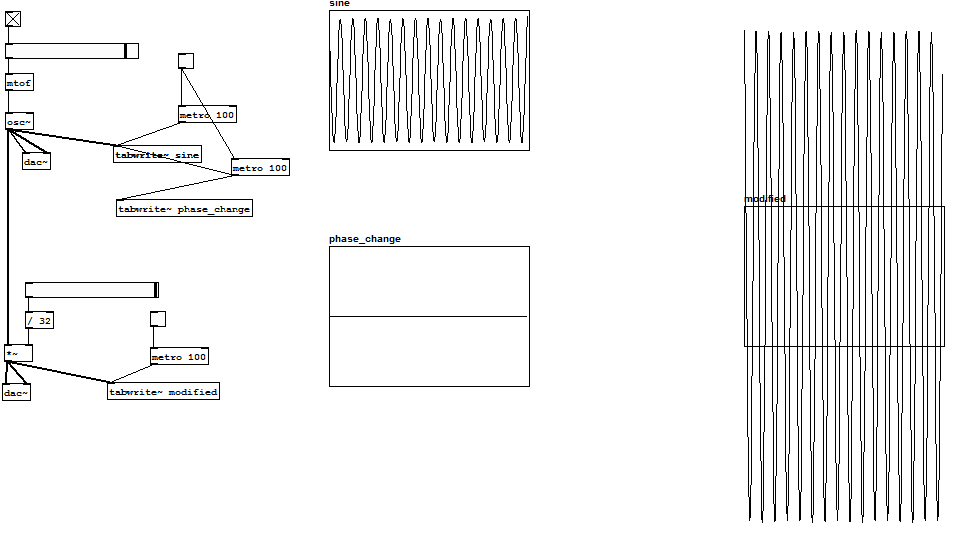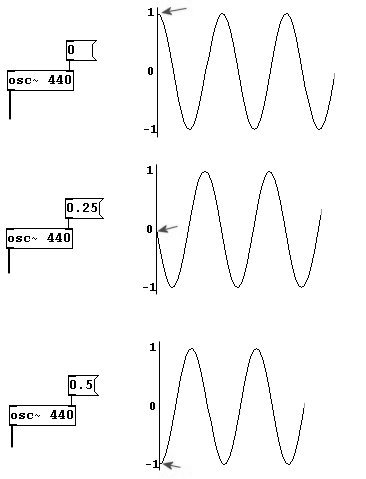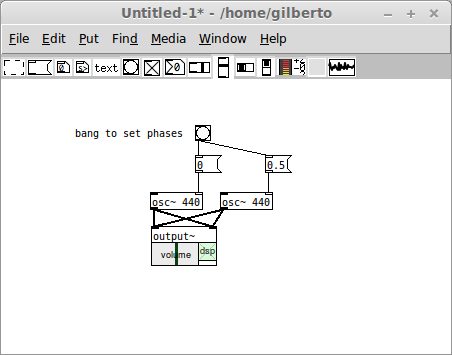Using the right inlet of the [osc~] object is a valid way to set the phase of an oscillator but it isn't the only or even the most correct way. The right inlet only permits a float at the control level.
A more comprehensive manipulation of phase can be done at the signal level using the [phasor~], [cos~], [wrap~], and [+~] objects. Essentially, you are performing the same function as [osc~] with a technique called a table lookup using [phasor~] and [cos~]. You could read another table with [tabread4~] instead of [cos~] as well.
This technique keeps your oscillators in sync. You can manipulate the phase of your oscillators with other oscillators, table lookups, and still of course floats (so long as the phase value is between 0 and 1, hence the [wrap~] object).
phase modulation at the signal level
Afterwards, like the other examples here, you can add the signals together and write them to corresponding tables or output the signal chain or both.
Here's how you might do the same for a custom table lookup. Of course, you'd replace sometable with your custom table name and num-samp-in-some-table with the number of samples in your table.
signal level phase modulation with custom tables
Hope it helps!



